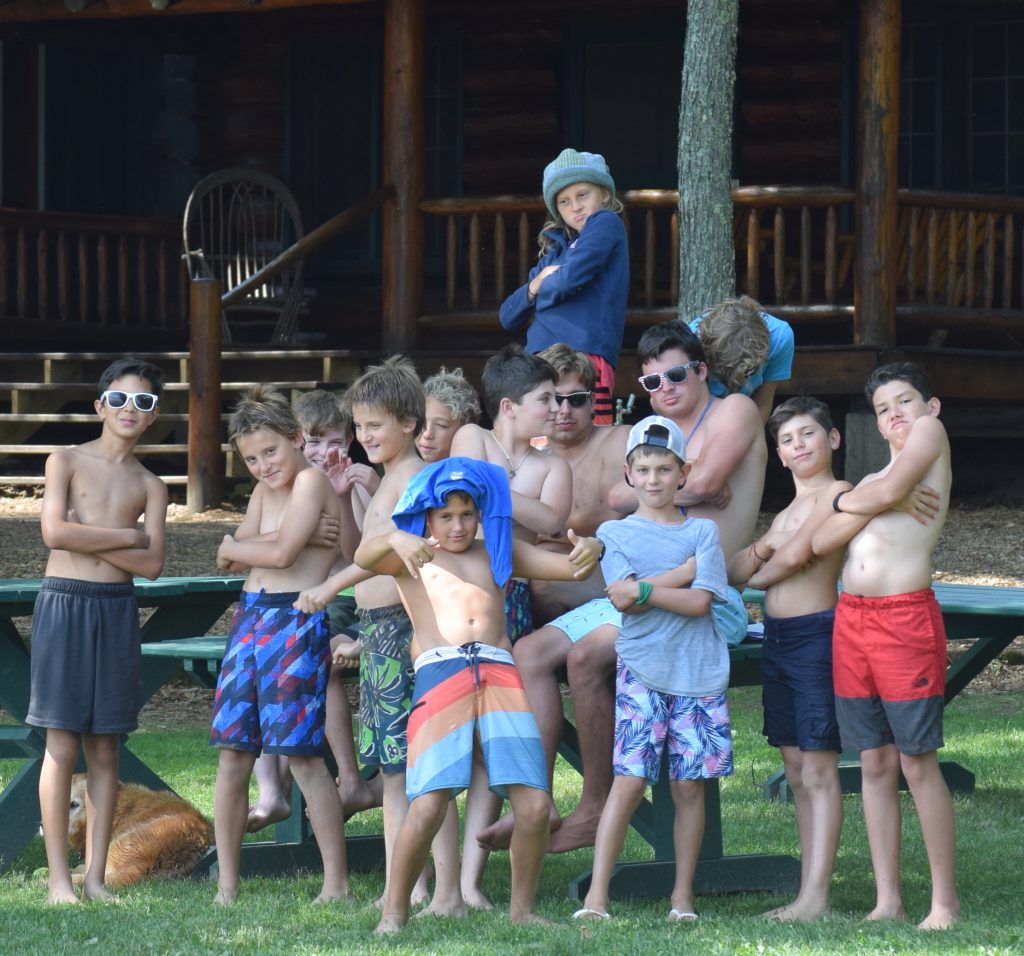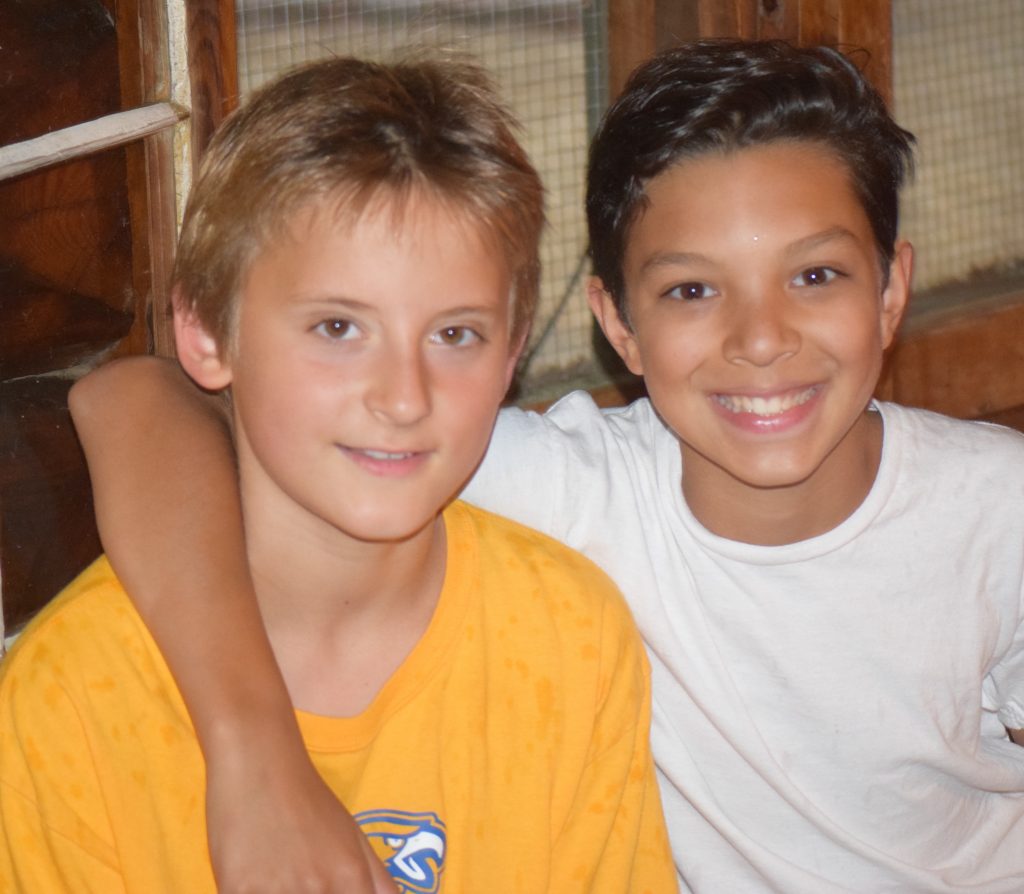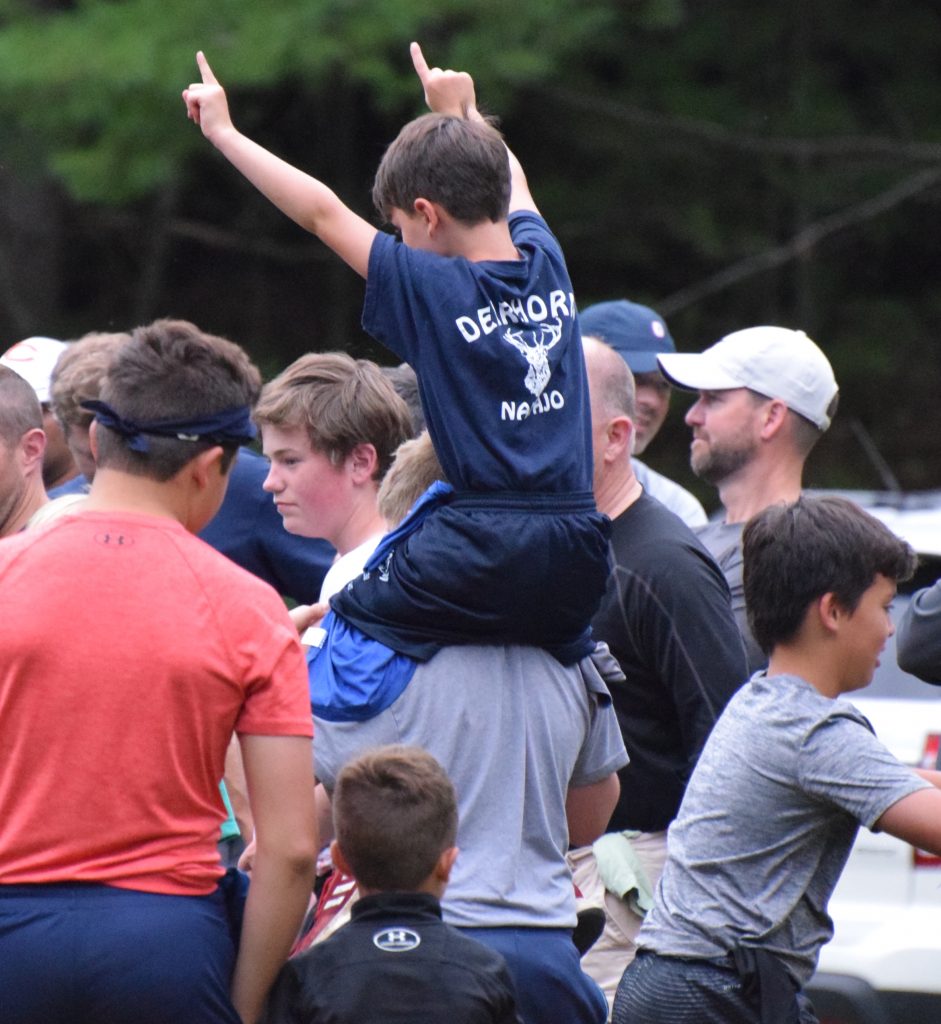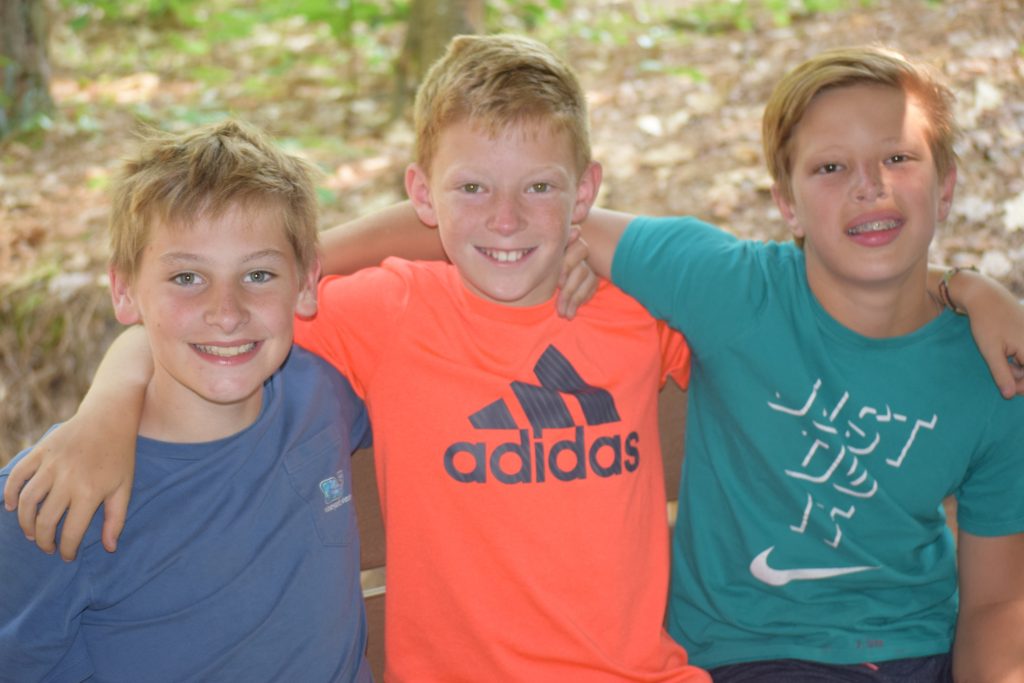We used to have a cheer at camp that we would do in the dining room before we had a competition with another camp. It was called “We Are Warriors.” Lines like, “We came upon a mountain. We could not go over it…We could not go under it…so we had to go around.” Then it came to the last part, about coming upon the camp we were taking on that afternoon…”We could not go over it…we could not go under it…and we could not go around…So we had to go through it!” (Cheers erupting throughout the dining hall.)
This cheer has crossed my mind more than once in recent weeks, as I think about helping our kids navigate these stressful times in which we are living. We cannot go over it. We cannot go under it. We cannot go around. We just have to go through it. We have to stand beside them, hold them close, and go through it together. It is the only way we will help them process all of these emotions, this disappointment, this loss.
I have shared articles over the past few weeks about how we help kids go through it. One, from Psychology Today, was written back in February, but it has good info on how to talk to your anxious child about what is happening in this new Covid-19 world. There were also good articles in the Huffington Post and The Atlantic, about helping kids stay calm. Another, from the New York Times, I found really helpful in knowing how to help our teenagers through this.

Teenagers.
All kids are struggling with this new reality we are facing. But teenagers are, perhaps, struggling with it the most. This is the time in their lives when they are increasingly seeking relationships outside the home, finding independence, and creating an identity of their own, separate from the people with whom they are living. And suddenly, just as they are beginning to create those social circles outside of the home, they are forced to socially distance from everyone outside their home. Yes, teenagers are good at virtually connecting, through social media, phones, and Facetime…but it’s just not the same. It’s not the same as hugs from your best friend, high fives from your team, and tears of joy or sorrow over shared experiences. This article, in Education Week, helps explain more.

And teenagers are facing often more loss than their younger siblings…sports events, prom, graduation, getting a driver’s license, all the rites of passage they have looked forward to for years…gone in an instant. The NYT article is a really good navigating tool for how to help our teenagers deal with all of their feelings, rather than just trying to smooth them over. “Many parents of teenagers are seeing such feelings play out at home and, in the face of all this discomfort, want to help. Our first instinct may well be to try to sweep away our teenagers’ worries with brooms of reassurance, coach them on how to “stay positive” and encourage them to use this strange timeout from their regular lives to be as productive as possible. But there’s another route we could take that might serve our teenagers better in the long run. We could, at this challenging time, help them make room for uncomfortable emotions.” In other words, they cannot go around. They have to just go through it, but they don’t have to go alone.

It goes on to say that, “Many people have to come to assume wrongly that psychological health — like physical health — means feeling good. Psychological health, however, is not about being free from emotional discomfort, but about having the right feeling at the right time, and being able to bear the unpleasant ones.” The skills we help them build now, the “tools” we give them in their toolbox, will serve them long after this crisis has passed.
We have a teenager of our own, and watching him go through this has been so painful as a parent. On the whole, he has navigated this process with humor and grace, even as his braces stay on for several months longer than they should have, his tennis tournaments got cancelled, and all of his end-of-year 8th grade celebrations disappeared in a poof. But last week we went through a period of 3 days or so when the only word to describe him was depressed. He was tired, he just laid on the couch all day, and smiles were hard to come by. We’ve hit a few of these walls along the way, these past two months, but this one lasted the longest. It was more than Lucky Charms and Pringles could cure. I even found myself sitting on the couch next to him, watching a virtual football game he had created in the void of professional sports cancellations. It was the last thing I wanted to watch on TV, but what was most important was just being there with him. I felt scared that I had run out of ideas to make this all better. How deeply I wanted to just smooth it all over, to save him from this pain. But he didn’t need ideas, and he didn’t need saving. He just needed time. Time to be allowed to be sad, and permission to feel all of the disappointment keenly, to process it in his teenage brain. And then, after 3 days, the smile was back, he wanted to set up the tent in the backyard, and he was his happy, talkative self again. He just had to go through it.

Michael Thompson, PhD, has also posted lots of other great pieces of information to help parents help kids navigate this pandemic.
“There is currently a flood tide of advice for parents, much of it suggesting that there is going to be an epidemic of child anxiety as a result of this pandemic. I reject that notion. There will be sad days and grouchy days and certainly days when children miss their friends. This social distancing will be very hard on some children, but the vast majority will rally and find some novelty and fun in these new circumstances. There are only four points that parents need to keep in mind.
1) Children don’t expect miracles. They only expect their parents to do their best to protect them. Parents should tell their children that they are doing everything in their power to keep them safe from the virus, and they are doing everything they can to keep themselves safe.
2) Parents need to not overwhelm the children with their own anxiety, or imagine that their children are as anxious as they are. With the possible exception of clinically anxious children, most kids are not going to be nearly as anxious as their parents.
3) While structure is important for children, and ongoing learning absolutely is, almost no family is going to be able to re-create the structure of school or all the achievements of school. Aim for seventy or eighty percent. If you make an effort to keep them learning, they will be able to catch up in the fall.
4) Children are naturally resilient. You don’t have to build resilience in children; you just have to give them chances to show it and practice it. Give your child some new challenges or chores so they can help the family; involve them in cooking or cleaning; ask an older sister or brother to watch a younger one for a time while you are working. Children want to help. Children have always rallied in wartime. There is nothing wrong with asking children to help you. It will give them dignity and self-respect.”
Parents, there is no “right way” to do this. And there is no way around. We just have to go through it. And we are here with you, going through it…together.

Beautifully written! Living in a 55 plus community one tends to focus on only elderly. This was an eye opener!